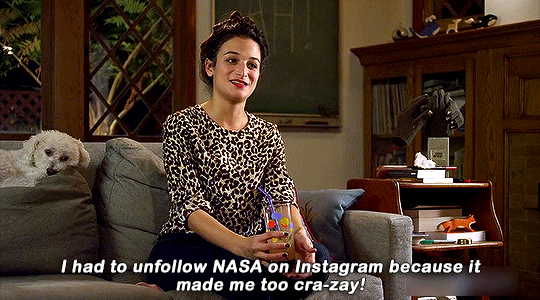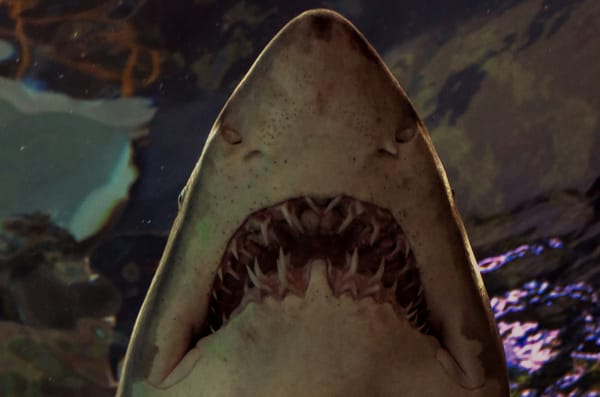The Frog Pond #3: All about aluminum
Or, a love letter to aluminum (atomic #13, #1 in my heart).

Welcome! You’ve survived the first month of the year. If this is your first installment of The Frog Pond, I recommend checking out The Frog Pond #1 to understand how you came to find this pond, and how it first welcomed you.
Third pond’s the charm
The beginning of the shortest month of the year brings you once again to the path through the forest and its fork in the road. Snow piles up respectfully along the edges of the well-worn route, but blankets the offshoot to the pond entirely. No other footprints have been made since the last snowfall. Are you the only one that goes this way?
You diverge from the path and crunch through foot-deep snow. This time, the pond has a thin frozen layer on top, though no snow blankets its surface. Peering into its depth, you spot the movements of bubbles trapped under the ice, and larger, vaguer movements deeper down.
This month’s pond session is curious, optimistic, and settling into its new routines.
Mist-erious knowledge
You wait for the mist as patiently as you can while standing in February snow. Then you realize—it is trapped within the ice.
Kneeling at the water’s edge, you wedge your fingers in the small gap where pebbles meet ice. You pull up. With a satisfying crack, a half-moon disk of ice breaks free, and with it, a warm mist pours over you.
Aluminum is weird.
What do you know about aluminum? Before a couple of weeks ago, I would have said it covers my food when I want it to stay hot, it’s light for a metal, and it’s shiny. But that’s about it.
But aluminum has some interesting, yet mysterious, properties!
(Aluminium (British spelling) and Aluminum (American spelling) are both correct! The name difference has existed as long as the terms, coined in 1811 and 1812, respectively1.)
Absolutely abundant…
Aluminum is the third most abundant element on Earth, after iron and oxygen2. Yes! Aluminum! Not sodium or nitrogen, not hydrogen or helium—aluminum. Earth is made up of about 1.5% aluminum by mass, and it is most commonly found in Earth’s crust3, partially due to its affinity for oxygen. Aluminum easily forms an oxide (a chemical compound with oxygen). I choose to believe they're in love.
The isotope 27AL is so common that it is the 12th most common element in the universe4. Yes!! The entire universe!!
…yet also extremely rare
And yet, naturally occurring pure aluminum is practically non-existent. Almost all aluminum is found in either oxides or silicates (a chemical compound with both oxygen and silicon). Most “native aluminum” on earth can be found not on land or underground, but deep in the sea!
“Cold seeps” in the South China Sea are areas on the deep ocean floor with very low oxygen concentrations, instead full of hydrogen sulfide, methane, and other hydrocarbons. They are relatively cold (still at least 60C/140F, youch!) compared to the super-hot hydrothermal vents. These can also be in the form of brine pools, which are dense, high-salinity lakes in the deep ocean5.
(You know a future mist-erious knowledge segment has to be a deep dive into these lakes!)
Oh, and pure aluminum can also be found inside some volcanoes6. It reminds me of that archaic bacteria7 that branched off from literally every other living thing in the world and only hangs out in the most extreme conditions in the world.
Aluminum isotopes come in two flavours: Primordial or shorter than your average prime-time TV show
Aluminum is also tied to the study of time. Specifically, the isotope 26AL is used in radiodating8, a technique to date materials (you may have heard of carbon dating—this is the same kind of thing!). At the beginning of the solar system (yeah, I know) 26AL was one of the radionuclides (an unstable nuclide) hanging around. 26AL is extinct in the present-day (yeah isotopes can go extinct?? Its half-life was (only?) 717,000 years9!), but the decay products (I don’t fully understand this, check out this resource for more information!) can be measured in objects such as meteorites. This helps us figure out the age of different early-solar system events.
Meanwhile our friend 27AL, the 12th most common element in the universe? It’s still around since the birth of our solar system! And it’s the only primordial (something that hasn’t changed form since Earth's formation) aluminum isotope still standing10.
You thought 717,000 years was short? Well, do I have some isotopes for you! Other aluminum isotopes with mass numbers 22 to 43 all have half-lives of less than an hour11.

Aluminum + impurities = gems
A fact to take us back from the edge of the universe: Aluminum occurs in a bunch of minerals, from beryl and garnet to turquoise and spinel. An impure form of aluminum oxide can give you rubies and sapphires12.
The odd lack of relationship with the living
So aluminum, in a ton of different forms, is all over the place on and within the Earth. So, like oxygen and iron, it must have a biological role to play, right?
Well… no? No living organism uses aluminum salts metabolically, yet they are often consumed by plants and animals, and well tolerated. There’s no known function for aluminum in biology, though it’s an area of further study. 13
But human skin can absorb it!14 There’s currently no evidence that the normal/everyday exposure you have to aluminum is in any way harmful or toxic15, though in rare circumstances/forms it can cause osteomalacia (softening of bones), anemia (reduced oxygen capacity in the blood), and central nervous system alterations16. The only treatment for removing aluminum from your body is deferoxamine mesylate, a medicine that binds together iron and aluminum to flush both out of the body (and other metals, like copper)17.
Speaking of aluminum and the human body…
A defence of normal antiperspirant
Have you seen in recent years antiperspirants on the shelves that read “aluminum-free”? What’s going on with aluminum that we don’t want on our skin?
(Deodorants don’t have aluminum. So if you see deodorants with the “aluminum-free” label, that’s like saying an apple is gluten-free. Yeah. Of course it is.)
Antiperspirants (and combination antiperspirants/deodorants) use aluminum salts as a way to dissolve into your pores and temporarily plug them, helping to stop sweat. Higher concentrations are used in prescription antiperspirants.
The science behind why companies have been removing aluminum salts is… not much to write home about. The claims range from aluminum blocking the expulsion of cancer-causing toxins18 to causing kidney disease19, both of which are untrue (explanations in the footnotes).
While very large, consistent amounts of aluminum consumed in specific ways (like breathing in powder, long-term dialysis use, or working in an unsafe aluminum factory for, like, 40 years straight) may lead to respiratory issues, bone softening or kidney damage, none of that has anything to do with the tiny amount of aluminum salt in antiperspirants20.
There’s a lot more to aluminum than I can cover here (and I have arguably already stressed the boundaries of a newsletter), but if any of this has piqued your interest, I hope you stick around for my next book, which draws inspiration from this weird, shiny little element into a historical gothic horror setting!
A word from a passing frog
Welcome to February! This is “the very 3 a.m. of the calendar”, as Joseph Wood Krutch put it. For me, it’s a time for staying as cozy as possible and trying not to go out into the ice and snow of South-East Ontario. Short days, long nights. Perfect, in a way, for writing work.
Querying
Onward! I’m still querying (I say still, it’s very early days yet!) and I can’t believe I’m 4 months into this process. The statistics thus far:
- Queries sent: 57 (more than halfway to my goal of 100!)
- Rejections: 27
- Requests: 7 (2 rejected, 5 “live”)
- Withdrawn: 1
- Waiting on: 24 + live requests
(I always worry about posting my statistics publicly. It’s so easy to become neurotic about them or worry others! But, if not in my own newsletter, where?)
I’m trying a new querying strategy: Dedicating one block of time every week to send out queries. I check for any newly opened agents and agents who have updated genres, as well as swap out any rejections I received for new queries.
Overall, I think I’m doing okay, hanging in there, and distracting myself just enough not to enter too deep into the QueryTracker Obsession Pit.
Drafting
Hellmouth WIP is going full steam ahead! I finished my outline early in January at roughly 10k (I tend to write very detailed beat-by-beat outlines, verging on Zero Drafts) and I’ve started drafting the first few chapters—up to 15k written!
This book is a fun one. It has everything I love to play with in fiction:
- Gothic horror voice,
- Victorian-era small village/mountain castle setting,
- Type A protagonist who cannot chill out,
- Complicated sibling dynamics,
- A terrible aristocratic family,
- A magic system based on obscure science facts,
- Critiques of capitalism, and
- A deadly competition.
It’s Crimson Peak x The Hunger Games x Ready or Not x All Of Us Villains x Bloodborne and I’m having a ball. I’m also hoping to read Tidepool by Nicole Willson and The Secrets of Hartwood Hall by Katie Lumsden soon as potential comparisons!
Writing
On a broader note, this journey from getting Lighthouse queried, to shelving my thriller project, to picking up Hellmouth has illustrated to me how much confidence and excitement in your books matters. You’re the one that’s stuck with these characters, plots, and settings for years on end, you have to believe in them in order to fight for them. They have to be for you before they can ever be for anyone else.
A few months ago I read a post on Tumblr (and for the life of me I cannot find it to quote directly!) that stuck with me, and the crux of the idea was:
When you think about your own writing, you might see the parts that make it uniquely yours as the weak point. The element that must be overcome in order to become good/great/enough. But you will never remove yourself from your own style, never outrun your own point of view, never shed yourself. Trying to do so only covers over the essential piece that so many others would love most about it.
(If you know the original post, please send me a link!)
I sat with that idea for a long time, mulling it over. Writing is an intensely introspective kind of craft, which requires passion and confidence and the hope to survive, creatively. And it often feels like everyone’s better at it than you in all the ways that matter. This also reminded me of a quote that’s haunted me for a few years now by Suzanne Rivecca:
“I don’t know what’s going to come out of me,” I told her. “It has to be perfect. It has to be irreproachable in every way.”
“Why?” she said.
“To make up for it,” I said. “To make up for the fact that it’s me.”
I have been trying to make up for the fact that I am the writer of my fiction since I picked up a pen. So this year, one big writing goal of mine—more than productivity—is to change how I see my style not as the element holding my writing back compared to others, but as the core that sets me apart if I take care of it properly.
Reading
This month I read two very different books:
HALF A SOUL by Olivia Atwater, a regency-set fantasy about a young woman who was cursed by a faery as a child and cannot feel emotions like fear or joy or embarrassment. The curse element reminded me of ELLA ENCHANTED, there are plenty of allusions to ALICE IN WONDERLAND, a ton of HOWL’S MOVING CASTLE parallels, and of course the setting and character dynamics of PRIDE & PREJUDICE with the voice of Bridgerton. It’s a great light read that handles its many themes and influences well. I’d recommend it to anyone who is a fan of any of the media above!
ALL OF US VILLAINS by Amanda Foody and Christine Lynn Herman is a YA gothic fantasy about seven families fighting for power over the only source of powerful magic through a generational deadly competition. “If the Addams Family were in THE HUNGER GAMES” about sums up the vibes. I enjoyed the breadth of character POVs that were explored between the families and the voice was well-crafted throughout, especially for a dual-author book! The themes of breaking through intergenerational trauma through magical metaphors were also really cool.
The next books on my list (a.k.a. that I have loaded on Libby) are EVEN THOUGH I KNEW THE END by C. L. Polk, UNDERLAND: A DEEP TIME JOURNEY by Robert Macfarlane, and BALLAD OF SONGBIRDS AND SNAKES by Suzanne Collins.
Watching
I’ve been watching The Last Of Us and I was blown away by the third episode this week. Without giving major spoilers, it’s a flashback-focused episode following the lives of two men throughout 20 years of a zombie apocalypse. It’s poignant, funny, heartbreaking, and I think a masterclass in creating a love story that feels deeply personal and thought through. There are very few shows, especially premiere TV shows, that feature older queer men and treat them with this level of respect, tenderness, and normalcy. The episode is obviously informed by where society was in Sept. 2003 (only one province in Canada had legalized gay marriage a month before the apocalypse begins, the 4th country in the world at that time to do so—and then the world ends in the TLOU timeline) while also creating complicated characters that are much more than one identity. It might hit for you, it might not, but it was hugely impactful to me in how the beauty of human connection can deepen tragedy and loss in storytelling. I cried like a baby.
I had some issues with the larger themes (like the myth of the lone libertarian prepper being able to sustain a town-level of infrastructure and farming, and the relative selfishness of it all, a common gripe I have with zombie media), but they were interesting, minor issues worthy of discussion.
A prompt on the lilypad
You return, back to the edge of the pond. The mist lingers around your ankles, like a grateful pup, then dissipates back beneath the ice. When you peer into the hole that you’d made, you find a lilypad bobbing gently with the breeze.
On the lilypad is a note. You reach out, and it reads:
How do the elements of your story (character, setting, plot, conflict, theme, voice, etc.) change, multi-task, decay, and/or evolve?
Do these elements of story, and the “isotopes” within them, have different properties of longevity, and/or stability?
Which is your most “abundant” story element, a.k.a. your strength?
How does it interact with the others?
You stand up from the pond’s edge. The ends of your fingers are ice-burnt, but the feeling will return by the time you reach home. There are responsibilities and joys to get on with. Soups to stir, blankets to hide within, words to write. The world keeps moving, even if the frog pond stays quiet, strange, and weirdly wonderful.
But maybe you’ll turn left again, the next time you go walking.
Footnotes
1
https://en.wikipedia.org/wiki/Aluminium#cite_note-OEDaluminium-usage-132
2
https://en.wikipedia.org/wiki/Aluminium
3
https://web.archive.org/web/20110928074153/http://quake.mit.edu/hilstgroup/CoreMantle/EarthCompo.pdf
4
5
https://www.sciencedirect.com/science/article/abs/pii/S1367912010002087?via%3Dihub
6
http://webmineral.com/data/Aluminum.shtml#.Y8tW0HbMLo8
7
https://www.merriam-webster.com/dictionary/archaea
8
https://web.archive.org/web/20081206010805/http://www.onafarawayday.com/Radiogenic/Ch14/Ch14-6.htm
9
https://ciaaw.org/aluminium.htm
10
https://en.wikipedia.org/wiki/Aluminium#CITEREFGreenwoodEarnshaw1997
11
https://www-nds.iaea.org/relnsd/vcharthtml/VChartHTML.html
12
https://en.wikipedia.org/wiki/Aluminium#CITEREFGreenwoodEarnshaw1997
13
https://onlinelibrary.wiley.com/doi/10.1002/14356007.a01_459.pub2
14
https://pubs.rsc.org/en/content/articlelanding/2013/EM/C3EM00374D
15
https://www.tandfonline.com/doi/abs/10.3109/09637486.2014.937801?journalCode=iijf20
16
https://www.tandfonline.com/doi/abs/10.3109/09637486.2014.937801?journalCode=iijf20
17
https://web.archive.org/web/20190831154809/http://www.arltma.com/Articles/AlumToxDoc.htm
18
The American Cancer Society has stated there is no evidence of this. Why toxins would need to specifically leave the armpit is beyond me, given the expulsion of cancerous toxins is not associated with the lymphatic system. And while there have been traces of aluminum found in breast cancer tissue, no link has been made in controlled studies to increased risk of breast cancer by using antiperspirants. Source: https://www.healthline.com/health/what-to-know-about-aluminum-in-deodorant#aluminum-free-products
19
This is a misunderstanding with the warning label to ask a doctor before using products with aluminum if you have kidney disease. The kidney processes aluminum, just like any other waste product, and at stage 4 of kidney disease it is recommended not to use any skincare with aluminum as it can cause undue stress on an already failing organ. But it doesn’t cause kidney disease. Source: https://www.healthline.com/health/what-to-know-about-aluminum-in-deodorant#aluminum-free-products
20
https://www.healthline.com/health/what-to-know-about-aluminum-in-deodorant#takeaway





